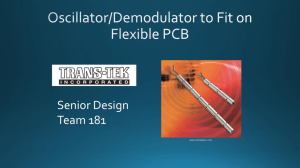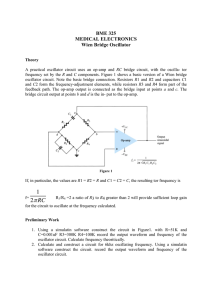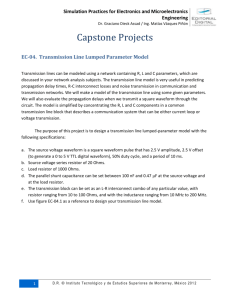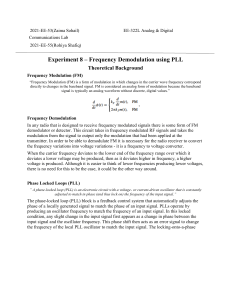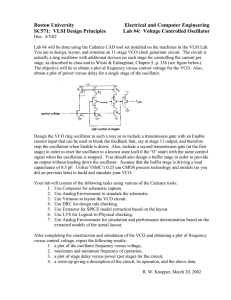RC Phase-Shift Oscillator Experiment Guide
advertisement
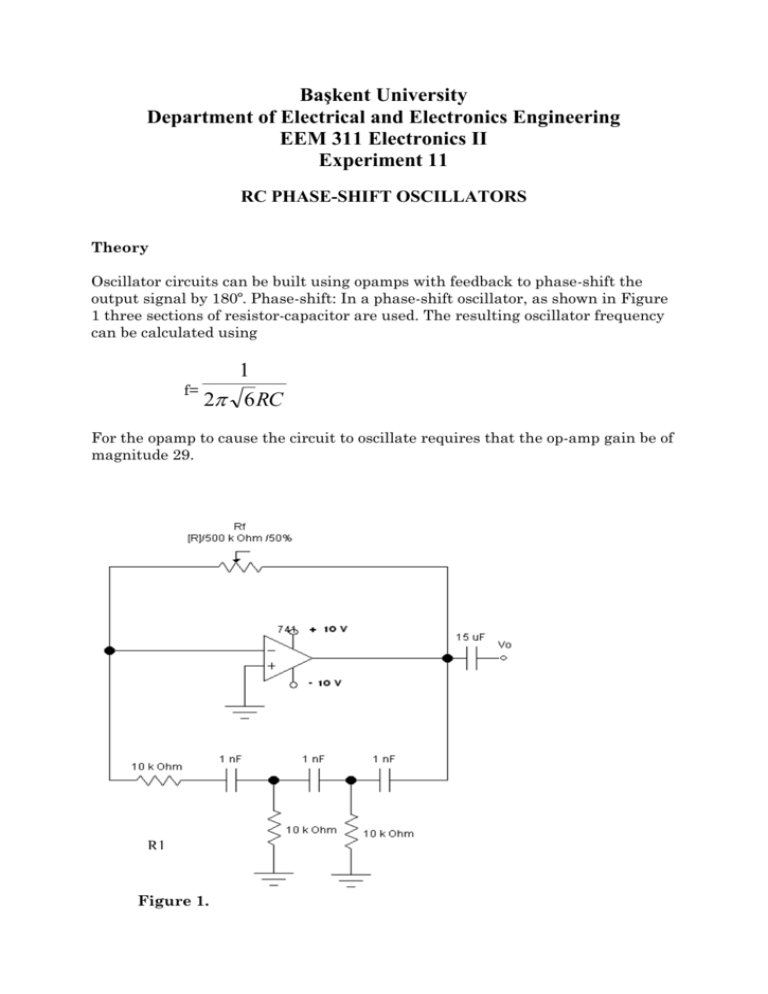
Başkent University Department of Electrical and Electronics Engineering EEM 311 Electronics II Experiment 11 RC PHASE-SHIFT OSCILLATORS Theory Oscillator circuits can be built using opamps with feedback to phase-shift the output signal by 180º. Phase-shift: In a phase-shift oscillator, as shown in Figure 1 three sections of resistor-capacitor are used. The resulting oscillator frequency can be calculated using 1 f= 2 6 RC For the opamp to cause the circuit to oscillate requires that the op-amp gain be of magnitude 29. R1 Figure 1. Preliminary Work Construct the circuit in Figure1. And record the output waveform of the oscillator circuit. Procedure 1. Construct the circuit of Figure 1 with a Rf= 500 K potentiometer, R1=22 K, R=100 K and C=1 nF. (Measure and record resistor values in Figure 1 ) 2. Use the oscilloscope to record the output waveform of the oscillator circuit. Adjust Rf for maximum undistorted output waveform Vo. Record value of rf for this undistorted condition. 3. Measure and record the time for one cycle of the waveform. 4. Determine the frequency of the waveform. 5. Replace the capacitors with C=10 nF and repeat steps 3-4. 6. Calculate the theoretical frequency using the equation in theory part. 7. Compare the measured and calculated frequency for both capacitors. Experiment List 741 op-amp 2-DC power supplies (±10V) Analog signal generator Resistors: 1*22K, 2*100K Potentiometer: 1*500 K Capacitors: 1* 15 µF, 3* 1 nF, 3*10 nF References Electronic Devices and Circuit Theory, Sixth Edition, Robert L. Boylestad, Louis Nashelsky. REPORT 1. Vout Vin Rf = ........ 2. T = ....... 3. f = 1/T f = ....... 4. T2 = ....... F = ......... 5. f (calculated) =.................... f2(calculated) = ................. 6. Commands:



